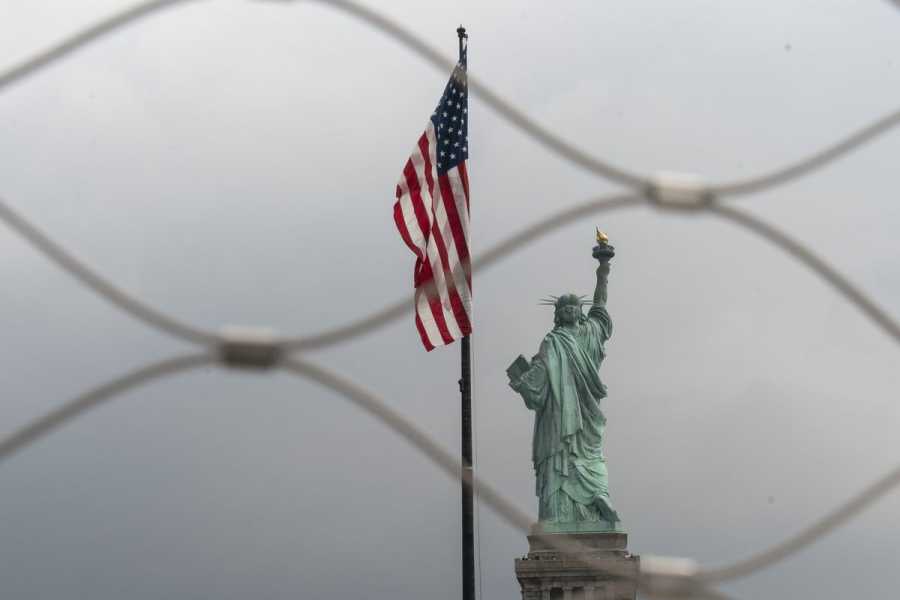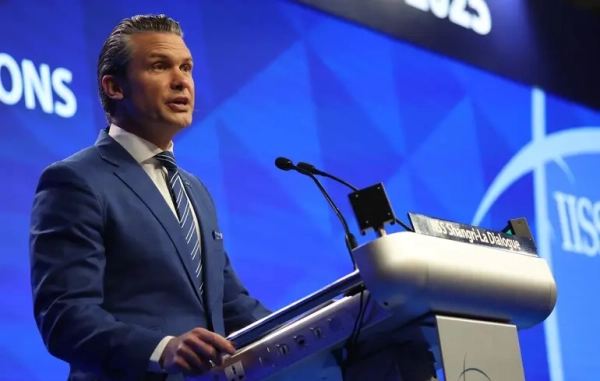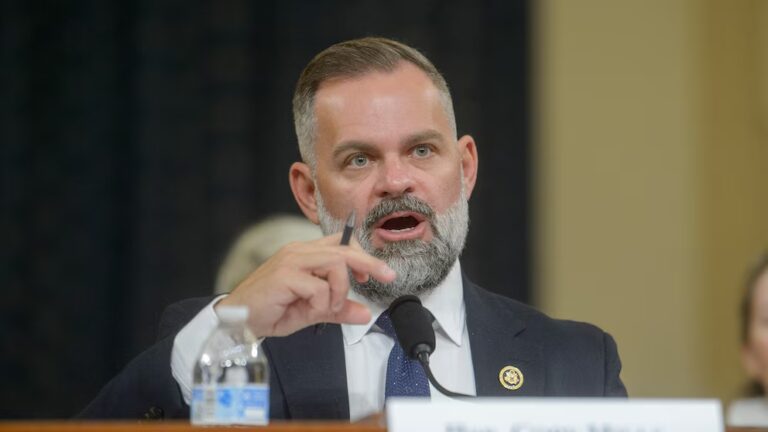The US knows how to resettle refugees. Why can’t it figure out what to do with the current wave of migrants?

The Statue of Liberty, as seen on August 14, 2019. Drew Angerer/Getty Images Abdallah Fayyad is a correspondent at Vox, where he covers the impacts of social and economic policies. He previously served on the Boston Globe editorial board.
The United States immigration system is so dysfunctional that it might sometimes seem as though it has no redeeming features. Asylum seekers are left in legal limbo for years, and immigration courts face a growing backlog of cases — all while arrests of migrants at the southern border have reached a record high.
But when it comes to addressing the current wave of migrants, many of whom are families and asylum seekers, American lawmakers don’t have to look very far to find a model to emulate: the United States’ very own refugee resettlement program.
Since the Refugee Act of 1980, the United States has resettled more than 3 million refugees. That’s more than any other country, making America’s refugee resettlement program the largest of its kind in the world.
That doesn’t mean it’s big enough, and the annual number of people admitted through the program — people fleeing war, persecution, or violence — has fluctuated over the years, especially recently. The Trump administration slashed the annual cap on refugee admissions to a historic low of 15,000, while the Biden administration raised it to 125,000. That’s just a small fraction of the world’s total refugee population of 36.4 million, according to the United Nations.
But for the people admitted, the program tends to work really well. “Congress set up this elaborate coordination and support system for resettled refugees and it was very deliberately done,” said Yael Schacher, the director for the Americas and Europe at Refugees International.
From the start, coordination between the federal government, states, and private resettlement agencies helps refugees land on their feet when they arrive. They qualify for health care, for example, and through the Office of Refugee Resettlement, they have access to services such as job training and case management. “They are also usually eligible for state benefits, like Medicaid, SNAP, food support, cash assistance if needed for families,” Schacher said. “Basically it puts resettled refugees in a position where they’re able to get all the benefits that citizens can get very soon after arriving.”
That assistance is crucial to helping refugees begin to rebuild their lives — especially as they do so after enduring traumatic circumstances — and it also benefits the communities that accept them. Studies have shown that once refugees resettle, they end up positively contributing to the economy: They eventually earn enough income to more than pay back in taxes the costs of the public assistance they initially received, and their spending helps boost local businesses and creates jobs. A study in Michigan, for example, found that refugees in the state pay some $130 million in state and local taxes each year. In 2016 alone, refugees in southeast Michigan contributed over $225 million to the regional economy in new spending and helped create thousands of new jobs.
The refugee program, in other words, benefits everyone involved. Yet despite its proven success, not all migrants have access to it. Asylum seekers, for example, don’t generally have access to federal benefits and, barring some exceptions, aren’t granted work permits. That’s in part why many cities have struggled to meet recent migrants’ needs, resulting in overcrowded shelters, a rise in homelessness, and overwhelmed local and state services.
As the country continues to face a growing migrant population, it’s worth considering what has worked in the past. “The only model we have for something like this is the refugee model, which acknowledges that that’s a national challenge,” said Muzaffar Chishti, a senior fellow at the Migration Policy Institute. “The fact that all these people are seeking asylum, makes it a problem that is akin, in our view, to the refugee problem. And the refugee [program] is the only time when the government gets involved in finding housing for migrants.”
How does the refugee resettlement program work?
Unlike with asylum seekers, who apply for protections once they reach the US, the federal government has a lot of lead time to prepare for refugees’ arrivals. An applicant’s background checks, interviews, and security clearances are completed abroad.
The Bureau for Population, Refugees, and Migration — part of the Department of State — is tasked with coordinating their arrival and figuring out which city or town will be their home, with the help of 10 nonprofit resettlement agencies, many of which are faith-based. That decision is based on various factors, such as whether a refugee has family members they should be reunited with, housing affordability, public school capacities, and employment opportunities — all important in helping someone integrate into a community.
Once a refugee arrives in the United States, the Office of Refugee Resettlement, which is part of the Department of Health and Human Services, provides them with basic services, including cash assistance, language classes, and job training. That office also works with states and local resettlement agencies to ensure that refugees are given long-term support.
While the federal government has been falling far short of addressing migrants’ needs, one area that has considerably improved in recent years is refugee resettlement. The White House has staffed up the US refugee program in recent years, allowing it to more than double the number of interviews conducted abroad. It also removed some of the bottlenecks that leave refugees waiting longer than necessary in the screening and vetting process, which typically takes nearly two years. (The number of refugees admitted per year increased from 11,400 in 2021 to roughly 60,000 in 2023.)
The administration also launched the Welcome Corps, a new program that allows small groups of private citizens to sponsor refugees, raise money for them, and help them resettle in the United States. More than 15,000 Americans applied to sponsor over 7,000 refugees in the program’s first year.
Why can’t the US do this for migrants, too?
Time and again, refugees have proven that they are a net economic benefit to their new communities.
It has been clear to lawmakers that providing refugees with a high level of coordination and public assistance is crucial. That’s why, over the years, Congress has expanded the Office of Refugee Resettlement’s responsibilities to include people such as unaccompanied minors, even if they don’t have refugee status. In some cases, certain groups, including Cubans, Haitians, and, more recently, Ukrainians and Afghans, have also been granted eligibility for federal benefits regardless of whether they come into the United States through the refugee admission program.
That has resulted in much smoother transitions for those groups in recent years than for the growing number of asylum seekers crossing the southern border. As Chicago Mayor Brandon Johnson told the Atlantic, “We have at least 30,000 Ukrainian refugees in the city of Chicago, and no one has even noticed.”
That’s because the federal government properly coordinated with states to determine where best to resettle the incoming Ukrainians, most of whom were granted parole, a distinct legal status that, unlike refugee or asylum classifications, is temporary and doesn’t provide a pathway to citizenship.
“Congress provided them through appropriations acts [with] essentially the same benefits that resettled refugees get,” Schacher said. “That really makes a huge difference if [the government is] essentially saying, ‘Yes, you came in not as refugees, but we’re going to give you these supports.’”
From a political standpoint, expanding those kinds of benefits to all asylum seekers has not been particularly feasible. Republicans have been campaigning for a punitive approach to immigration reform, reducing benefits to discourage people altogether from coming to the US. The growing migrant population has also created a lot of backlash for the Biden administration from members of his own party, with even some Democrats beginning to push for harsher immigration laws to reduce the short-term financial costs of supporting migrants.
Still, most Americans support opening the border to refugees and people fleeing war, persecution, and other tragedies. A 2022 Pew Research Center poll, for example, found that 72 percent of Americans believe that taking in refugees escaping violence and war is an important policy goal for the United States.
But that public sentiment doesn’t necessarily extend to other migrants who face similar situations. A 2024 Monmouth University poll found that more than 60 percent of Americans believe that asylum seekers crossing the border should be made to stay in Mexico until their legal processes play out.
That divergence of public attitudes is a major impediment to using the refugee resettlement program as a model for other parts of the immigration system, despite the fact that it’s a much more humane and economically successful approach to immigration.
But that doesn’t mean that Americans, or their representatives in Congress, will never embrace asylum seekers the same way they do refugees. After all, the difference between these immigrants is often just their legal classification, when in reality, asylum seekers, parolees, and refugees tend to be escaping similar conditions — which in many cases, the United States played a role in creating.
“I think the reason the refugee resettlement program has worked is because there’s been this underlying consensus that we have a moral responsibility to care for these certain, select people,” Schacher said. “To get to that for asylum seekers, we need to develop that moral argument.”
Sourse: vox.com






